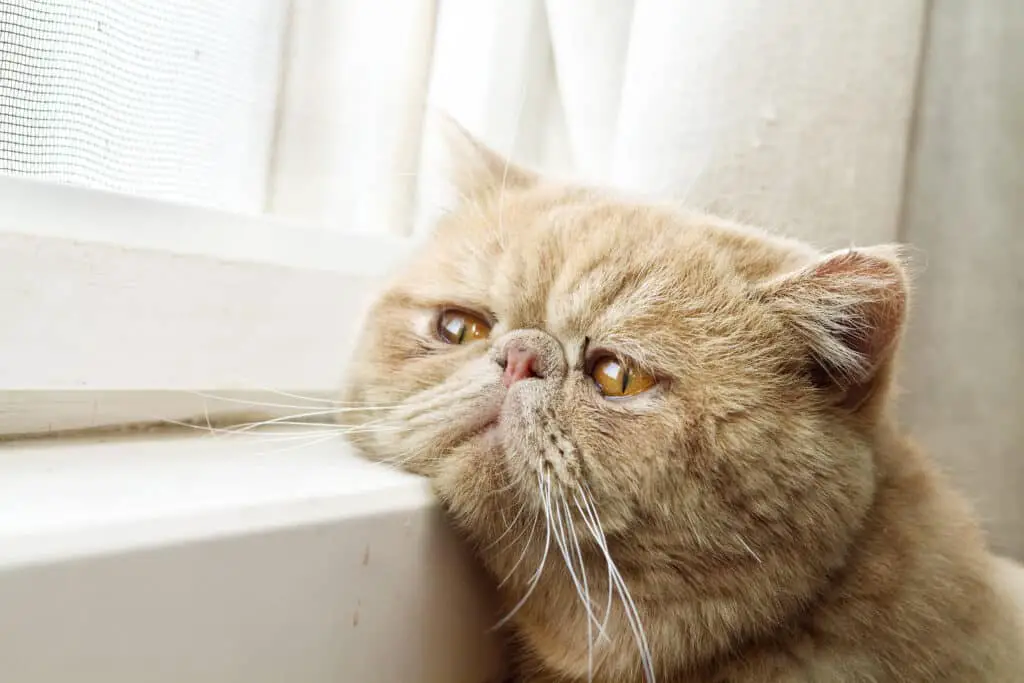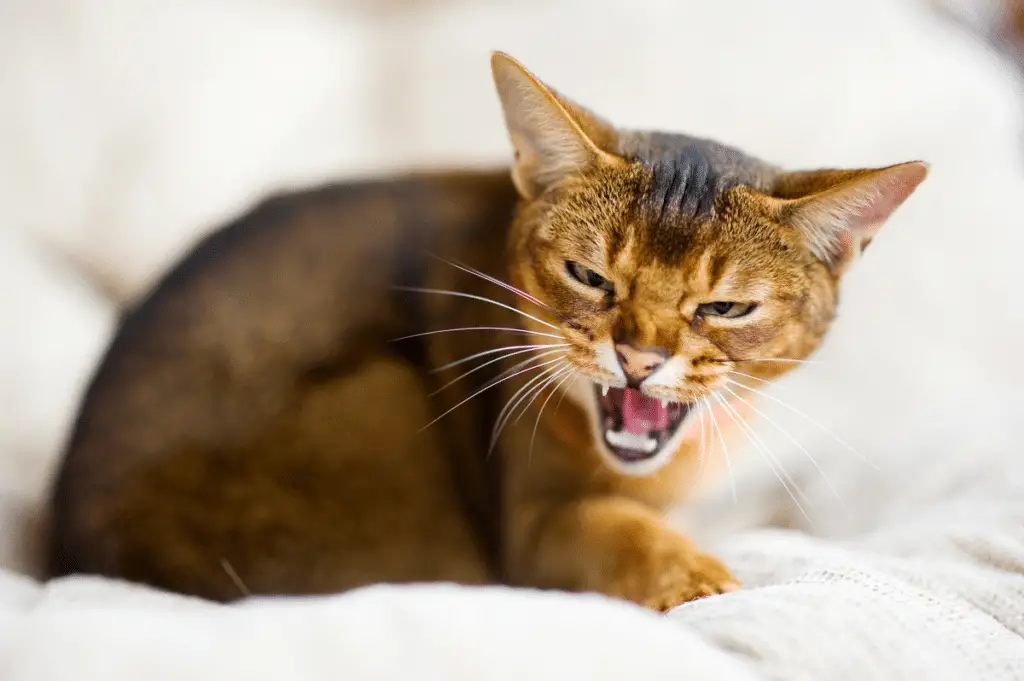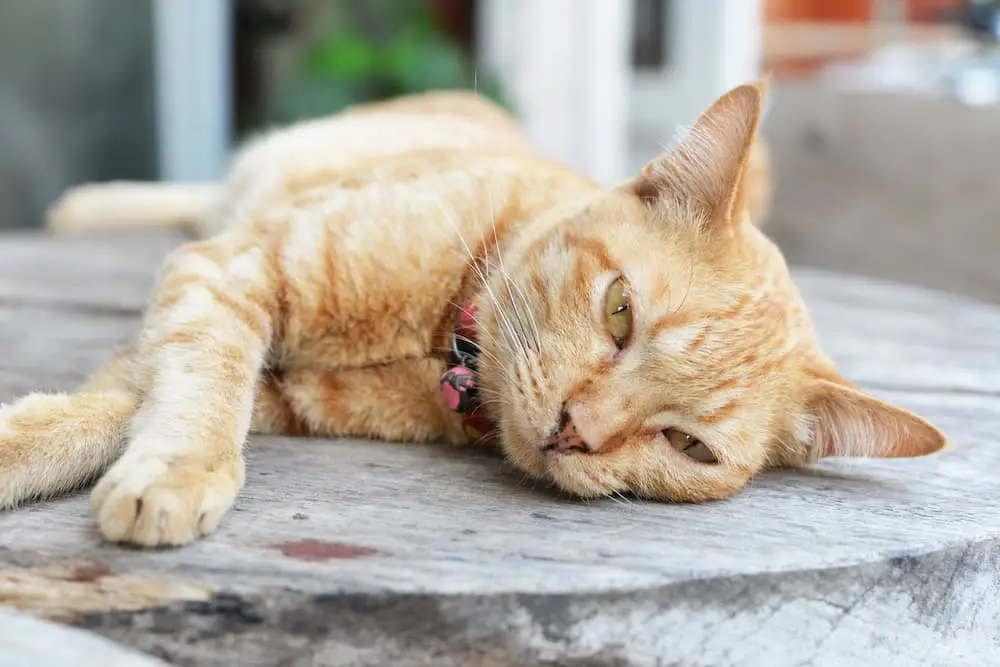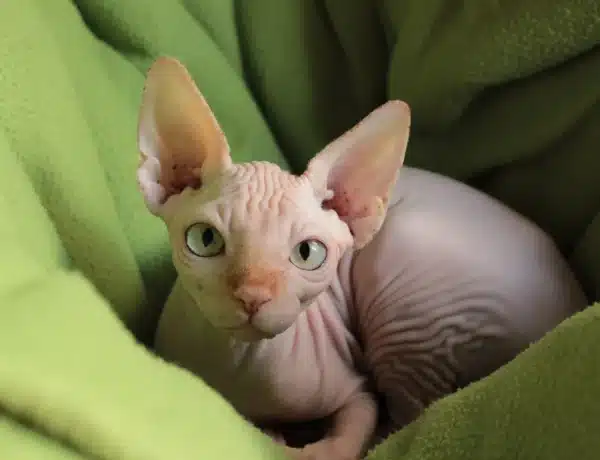Introduction
Are Cats In Pain When In Heat: When it comes to our feline friends, there are many aspects of their behavior and health that we may not fully understand. One such aspect is the phenomenon of cats being in heat. As cat owners, it is important for us to be aware of the signs and symptoms that indicate whether our cats are in pain during this time. We will explore the topic of whether cats experience pain when in heat and delve into the various factors that contribute to their discomfort.
Before we can determine whether cat eat are in pain when in heat, it is crucial to understand the heat cycle in cats. Female cats, also known as queens, go through a reproductive cycle that is characterized by periods of heat. During this time, they become sexually receptive and may exhibit various behaviors such as increased vocalization, restlessness, and rubbing against objects. The heat cycle typically lasts for about a week, and if the queen does not mate, she may go into heat again after a short period of time.
While cats in heat may display certain behaviors that indicate discomfort, such as excessive grooming or rolling on the floor, it is still a topic of debate whether they experience actual pain. Some experts argue that the behaviors exhibited by cats in heat are simply a result of their hormonal changes and natural instincts, rather than being indicative of pain. However, other experts believe that cats may indeed experience pain during this time, as the reproductive process can be physically demanding and uncomfortable.

Is my cat suffering while in heat?
When a cat is in heat, it means that she is in the fertile period of her reproductive cycle. During this time, she may exhibit certain behaviors and physical changes that can be distressing for both the cat and her owner. However, it is important to understand that while a cat in heat may experience some discomfort, it is not the same as suffering.
During heat, a cat’s body goes through hormonal changes that prepare her for mating and potential pregnancy. These changes can cause her to display certain behaviors such as increased vocalization, restlessness, and rubbing against objects or people. She may also exhibit physical signs like a swollen vulva and increased urination.
While these behaviors and physical changes can be frustrating for owners, it is important to remember that they are natural and necessary for a cat’s reproductive cycle. It is her body’s way of signaling that she is ready to mate and reproduce. In the wild, these behaviors would attract male cats and increase the chances of successful reproduction.
However, it is understandable that some owners may be concerned about their cat’s well-being during this time. It is important to provide a safe and comfortable environment for the cat, where she can express her natural behaviors without any risk of harm or unwanted mating. This may involve keeping her indoors, away from male cats, and providing plenty of toys and enrichment to keep her occupied.
If you are concerned about your cat’s discomfort during heat, it is always best to consult with a veterinarian. They can provide guidance on how to manage your cat’s heat cycle and may recommend options such as spaying to prevent future heat cycles altogether.
How can I soothe my cat in heat?
When a female cat is in heat, it can be a challenging time for both the cat and its owner. The cat may exhibit behaviors such as excessive vocalization, restlessness, and spraying urine. These behaviors can be distressing for the cat and disruptive for the household. Fortunately, there are several ways to soothe a cat in heat and help alleviate their discomfort.
Provide a calm and comfortable environment: Creating a peaceful environment for your cat can help reduce their stress during this time. Make sure they have a quiet space where they can retreat to and feel safe. Provide soft bedding and ensure the room is warm and cozy.
Offer plenty of attention and affection: Cats in heat often crave attention and affection. Spend extra time with your cat, petting and cuddling them. This can help distract them from their discomfort and provide comfort.
Provide interactive toys: Engaging your cat in play can help redirect their energy and provide mental stimulation. Interactive toys, such as puzzle feeders or toys that dispense treats, can keep them occupied and help alleviate their restlessness.
Consider pheromone therapy: Pheromone therapy involves using synthetic pheromones that mimic the natural ones produced by cats. These pheromones can help create a sense of calm and security for your cat. They are available in the form of sprays, diffusers, or collars.
Consult with a veterinarian: If your cat’s heat symptoms are severe or causing significant distress, it is advisable to consult with a veterinarian. They can provide further guidance and may recommend medications or procedures to help soothe your cat.
What does my cat feel when she’s in heat?
When a female cat is in heat, she experiences a range of physical and behavioral changes. These changes are a result of her body preparing for potential mating and reproduction. It is important for cat owners to understand what their cat is going through during this time, as it can help them provide the necessary care and attention.
One of the most noticeable signs of a cat in heat is her vocalization. She may become more vocal than usual, meowing loudly and frequently. This is her way of attracting male cats and letting them know that she is ready to mate. The meowing can be quite persistent and can be heard throughout the day and night.
In addition to vocalization, a cat in heat may also display certain physical behaviors. She may roll around on the floor, rub against furniture, and assume a mating position with her hind end raised in the air. These behaviors are all part of her instinctual drive to attract a mate.
Physically, a cat in heat may experience swelling of the vulva and increased vaginal discharge. This is a normal part of the reproductive cycle and is a sign that she is fertile. The discharge may be clear or slightly bloody, and it is important to keep an eye on it to ensure that it remains normal and does not indicate any health issues.
A cat in heat may also experience discomfort and restlessness. She may pace around the house, have difficulty sleeping, and may even lose her appetite. Providing a calm and comfortable environment for her during this time can help alleviate some of her discomfort.
Do cats feel sad when in heat?
When cats are in heat, they experience a range of physical and behavioral changes. This is a natural part of their reproductive cycle, and it is not uncommon for them to display signs of discomfort or restlessness during this time. However, whether or not cats feel sad when in heat is a more complex question that requires a deeper understanding of their emotions and behavior.
Cats do not experience emotions in the same way humans do. While they may exhibit behaviors that we interpret as sadness, it is not necessarily an accurate reflection of their emotional state. Cats in heat may appear more agitated or vocal than usual, and they may seek attention or attempt to escape from their environment. These behaviors are driven by their instinctual desire to mate and reproduce, rather than a feeling of sadness.
During the heat cycle, female cats release pheromones that attract male cats. This can lead to increased vocalization, restlessness, and even aggression in some cases. Male cats may also become more territorial and exhibit behaviors such as spraying urine to mark their territory. These behaviors are all part of the natural mating process and are not indicative of sadness or emotional distress.
It is also worth noting that cats in heat may experience physical discomfort due to hormonal changes and the physical act of mating. They may exhibit signs of pain or discomfort, such as excessive grooming or restlessness. However, it is important to consult with a veterinarian if you suspect your cat is in pain, as there may be underlying medical issues that need to be addressed.
Cats in heat may display behaviors that we interpret as sadness or distress, it is important to remember that these behaviors are driven by their instinctual desire to mate and reproduce. It is always best to consult with a veterinarian if you have concerns about your cat’s behavior or well-being during this time.
Do female cats cry when in heat?
Female cats do not cry in the same way that humans do when they are in heat. However, they do exhibit certain behaviors and vocalizations that can be interpreted as crying or calling out for attention. When a female cat is in heat, she is experiencing a period of sexual receptivity and fertility. During this time, she may display a range of behaviors to attract male cats and signal her readiness to mate.
One of the most common behaviors exhibited by female cats in heat is vocalization. They may meow loudly and persistently, often in a high-pitched and plaintive tone. This vocalization is not a result of physical pain or distress, but rather a way for the cat to communicate her availability to potential mates. The meowing is often accompanied by other behaviors such as rolling on the ground, rubbing against objects, and assuming a mating position.
Female cats will exhibit the same level of vocalization when in heat. Some cats may be more vocal than others, while some may be relatively quiet. Additionally, the intensity and duration of the vocalizations may vary from one heat cycle to another. Factors such as the individual cat’s personality, hormonal fluctuations, and environmental stimuli can all influence the extent of vocalization.
In addition to vocalization, female cats in heat may also display other behaviors such as increased affection towards their owners, restlessness, and an increased interest in going outside. They may also exhibit spraying behavior, where they mark their territory with urine. These behaviors are all part of the cat’s natural reproductive instincts and are aimed at attracting a mate.
It is important for cat owners to understand and recognize the signs of a female cat in heat. While the vocalizations and behaviors may be disruptive or annoying at times, it is a normal part of the cat’s reproductive cycle. If the cat is not intended for breeding, it is recommended to have her spayed to prevent unwanted pregnancies and to help manage her behavior during heat cycles.
When a cat is in heat, there are several common signs and symptoms that can indicate their reproductive cycle. One of the most noticeable signs is an increase in vocalization, with the cat often yowling or meowing loudly to attract potential mates. Additionally, a cat in heat may become more affectionate and seek attention from their owners or other cats. They may also display restlessness and become more active, constantly moving around and rubbing against objects or people.
Another common sign of a cat in heat is the presence of vaginal discharge, which can range from clear to slightly bloody. This discharge is a natural part of the reproductive process and helps to attract male cats. Additionally, a cat in heat may assume a mating position, with their hind end raised and their tail to the side, as a way to signal their readiness to mate.
How long does the heat cycle typically last for a cat?
The heat cycle, also known as estrus, typically lasts for about 4 to 7 days in cats. However, this can vary from cat to cat. Some cats may experience a shorter heat cycle of only 2 to 3 days, while others may have a longer cycle of up to 10 days. It is important to note that the duration of the heat cycle can also be influenced by factors such as the cat’s age, breed, and overall health.
During the heat cycle, a cat will go through different stages, including proestrus, estrus, and postestrus. Proestrus is the initial stage where the cat may exhibit signs such as increased affection, restlessness, and frequent urination. Estrus is the stage where the cat is most fertile and may display behaviors like yowling, rolling on the floor, and rubbing against objects. Postestrus is the final stage where the cat’s behavior starts to return to normal.
What are some effective ways to alleviate the discomfort and pain experienced by a cat in heat?
When a cat is in heat, she may experience discomfort and pain due to hormonal changes and the desire to mate. Fortunately, there are several effective ways to alleviate these symptoms and provide relief for your feline friend.
1. Provide a quiet and comfortable environment: Creating a calm and soothing environment for your cat can help reduce her stress levels and alleviate discomfort. Set up a cozy spot with soft bedding where she can relax and feel safe.
2. Offer plenty of play and exercise: Engaging your cat in play and exercise can help distract her from the discomfort she may be experiencing. Interactive toys, such as feather wands or laser pointers, can provide mental and physical stimulation, helping to alleviate her discomfort.
3. Provide a heat pad or warm compress: Applying a heat pad or warm compress to your cat’s lower abdomen can help soothe her discomfort. Make sure to use a low heat setting and monitor her closely to prevent any burns or injuries.
4. Consider using pheromone sprays or diffusers: Pheromone sprays or diffusers, such as Feliway, can help create a calming environment for your cat. These products mimic the natural pheromones that cats release when they feel safe and secure, helping to reduce stress and alleviate discomfort.
5. Consult with your veterinarian: If your cat is experiencing severe discomfort or pain during her heat cycle, it is important to consult with your veterinarian. They can provide additional guidance and may recommend medications or other treatments to help alleviate her symptoms.
Are there any potential health risks or complications associated with a cat being in heat?
Yes, there are potential health risks and complications associated with a cat being in heat. One of the main risks is the possibility of the cat becoming pregnant if she mates with a male cat during this time. This can lead to unwanted litters of kittens and can also put the cat’s health at risk, especially if she is young or not in optimal health herself.
Another potential complication is the increased risk of certain reproductive diseases, such as pyometra, which is a serious infection of the uterus. This condition can be life-threatening if left untreated and may require emergency surgery to remove the infected uterus. Cats in heat may also be more prone to urinary tract infections, as the hormonal changes during this time can affect the pH balance of the urine and make it easier for bacteria to thrive.
Is it necessary to spay a cat to prevent future episodes of heat and potential pain?
Yes, it is highly recommended to spay a cat in order to prevent future episodes of heat and potential pain. Spaying, also known as ovariohysterectomy, is a surgical procedure that removes the ovaries and uterus of a female cat. By doing so, it eliminates the hormonal fluctuations that occur during the heat cycle, effectively preventing the cat from going into heat.
Spaying not only prevents future episodes of heat, but it also offers several other benefits for both the cat and the owner. Firstly, it eliminates the risk of unwanted pregnancies, which can lead to overpopulation and the abandonment of kittens. Additionally, spaying greatly reduces the risk of certain reproductive diseases, such as uterine infections and mammary tumors. These conditions can be life-threatening and require expensive medical treatments.
Spaying a cat can also help improve her behavior. Cats in heat can exhibit aggressive and restless behavior, often yowling and urinating more frequently to attract males. By spaying, these behaviors are significantly reduced, leading to a calmer and more contented cat. It also eliminates the strong and unpleasant odor associated with a cat in heat, making the indoor environment more pleasant for both the cat and the owner.

Conclusion
After analyzing the information and research available, it can be concluded that cats do experience discomfort and pain when they are in heat. The signs and symptoms exhibited by cats during this period clearly indicate their distress. These include increased vocalization, restlessness, excessive grooming, and aggression. The physical changes that occur in their bodies, such as swollen genitals and increased urination, further support the notion that cats are indeed in pain during heat.
Cat owners to be aware of these signs and symptoms so that they can provide the necessary care and support to their pets during this time. Providing a comfortable and stress-free environment, offering plenty of attention and affection, and consulting with a veterinarian for possible pain management options are all crucial steps in ensuring the well-being of a cat in heat.
Cats do experience pain when they are in heat. It is essential for cat owners to be attentive to the signs and symptoms exhibited by their pets during this time cat heat and provide the necessary care and support. Spaying or neutering is a highly recommended solution to prevent the discomfort and pain associated with heat, while also offering various health benefits for the cat. By understanding and addressing the needs of cats in heat, owners can ensure the well-being and happiness of their feline companions.





No Comments